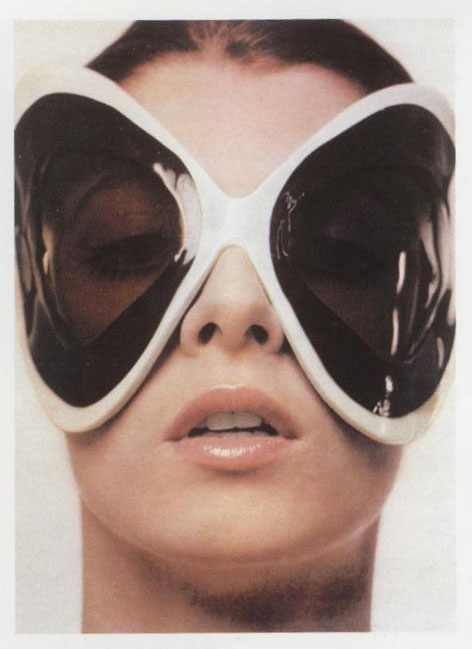These are a few excerpts from the highly interesting chapter "fashion meets discretion" in the highly interesting book "design meets disability" (Pullin, 2009). In this chapter, the author discusses the tension between the notion of design for disability having to be discrete and invisible versus fashionable and a statement. The two approaches are exemplified by contrasting the development of glasses and hearing aid devices (see the following posting).
discretion
The priority for design for disability has traditionally been to enable, while attracting as little attention as possible. Medical-looking devices are molded from pink plastic in an attempt to camouflage them against the skin. The approach has been less about projecting a positive image than about trying not to project an image at all.
But is there a danger that this might send out a signal that disability is after all something to be ashamed of? If discretion were to be challenged as a priority, what would take its place? Invisibility is relatively easy to define, and may even be achieved through technical and clinical innovation alone, but it is more difficult to define a positive image purely from these perspectives.
fashion
Fashion, on the other hand, might be seen as being largely concerned with creating and projecting an image: making the wearer look good to others and feel better about themselves.
Eyewear is one market in which fashion and disability overlap. On the rare occasions that the words design and disability are mentioned in the the same breath, glasses are often referred to as the exemplar of a product that addresses a disability, yet with little or no social stigma attached. This positive image for disability has been achieved without invisibility.
tension
Fashion and discretion are not opposites, of course; fashion can be understated, and discretion does not require invisibility. Nonetheless, there is a tension between these qualities because they cannot both be the absolute priority. There are also deep cultural tensions between the two designs communities. Perpaps fashion with its apparent preoccupation with an idealized human form is seen as having little to say about diversity and disability. The extremes and sensationalism of cutting-edge fashion can seem inappropriate in the context of disability, where discretion is seen as being so important. For some in the medical field, the very notion of being in fashion, of designs coming and going, is the antithesis of good design.
But learning from fashion might require embracing not only its design qualities but also more of its values. Fashion does not just arise from a particular set of skills but creates and requires a culture. The mechanism through which fashion design evolves, whether through haute couture or street fashion, ceates extreme designs that can provoke negative as well as positive reactions in different audiences. It may not be possible to have one without the other, to have the results without the culture and the values. (...)
- - - - - - - -
- Pullin, G. (2009). design meets disability. Cambridge & London: The MIT Press.
- photograph (Pierre Cardin) via























Wow. Thanks!
ReplyDeleteMany thanks for the "wow", Derek!
DeleteIs this Romy Schneider? Anyway, great shot indeed.
ReplyDeleteNo + yes :-) Thanks, Wim!
Delete